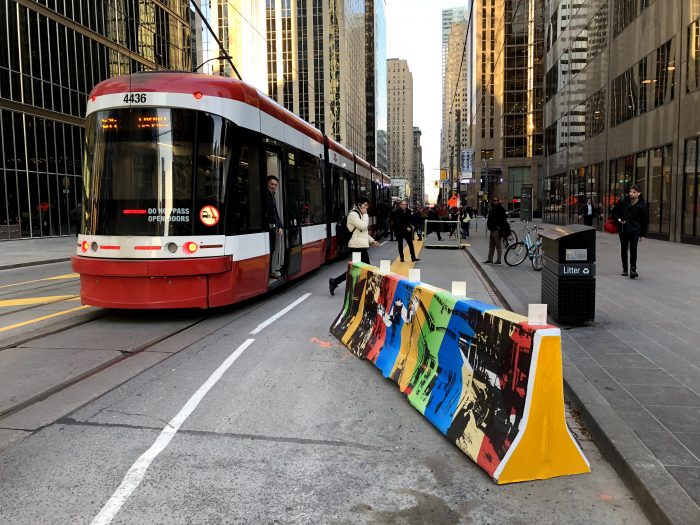It's been just a few short months since Toronto cleared most of the car traffic off King Street, giving the city's busiest streetcar route an unimpeded path.
But already, the impact of the project is clearly transformative. Faster, more reliable service has helped boost ridership dramatically, report local transit officials.
Before Toronto banned through traffic on King Street, the streetcar carried 65,000 daily trips. Ridership is now up 25 percent at peak hours, according to the Toronto Transit Commission [PDF]. The city will have to run more streetcars to keep up with demand.
"The rationale to do this is to move transit more quickly and get people on transit, and this shows that in spades," TTC chair Josh Colle told the Globe and Mail.
The new transit trips have not been siphoned from other routes. TTC told the Globe and Mail ridership has held steady on nearby Queen Street.
The redesigned street allows drivers to access King Street but compels them to make right turns after a short distance. The Globe and Mail reports that car traffic has declined more than expected.
Without car traffic getting in the way, transit is moving much faster, the city reports. Rush hour trips take about four minutes less from end to end, an improvement of about 16 percent. Reliability is up too -- the number of trips with delays has fallen 33 percent.
The King Street project was built using temporary materials like painted concrete dividers for just $1.5 million. It's a pilot that's supposed to be evaluated after one year, but the drumbeat to make the changes permanent has already started.
To be sure, there's also opposition. Some businesses are complaining that they've lost a significant share of customers and most say they've lost at least some. They are pushing the city to limit the vehicle restrictions to peak hours. Doug Ford, brother of the late mayor Rob Ford, has also been a prominent critic. The city has responded by adding free parking on side streets.
Overall public opinion seems to be firmly on the side of keeping the car restrictions in place. A recent poll showed strong public support for the pilot project.
The city is collecting data on pedestrian activity and sales data for nearby businesses, but that will not be released until later in the year.






